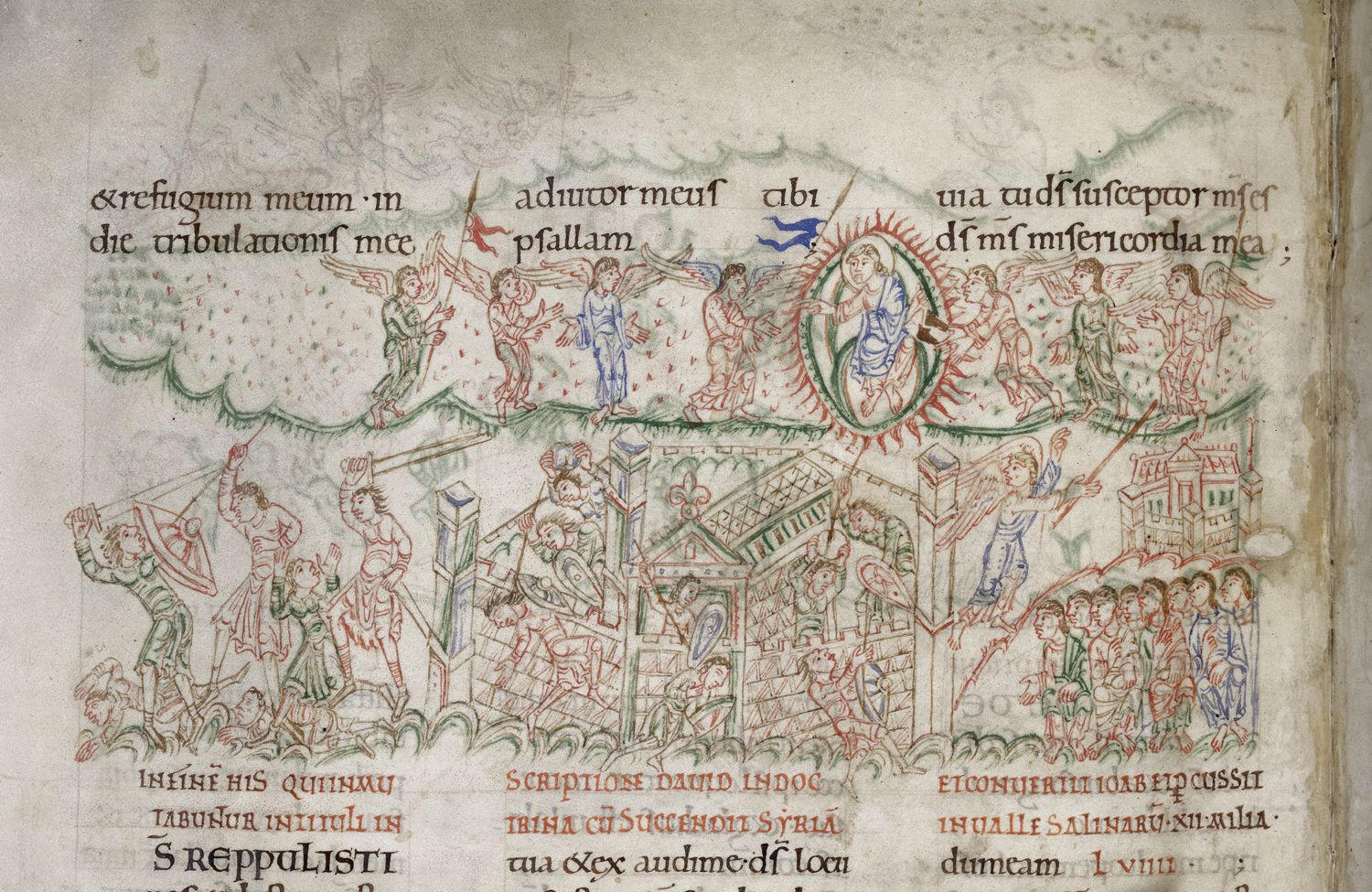
Create an Amazon Wedding Registry
folio 32v
Detail of a pen drawing illustrating Psalm 59
British Library, MS Harley 603
Harley Psalter



Origin: England, S. E. (Canterbury)
Date: 1st half of the 11th century
Description: Detail of pen drawings illustrating Psalm 59: the Lord in a mandorla handing a pair of shoes to an angel; the defenders of the city of Edom are facing the attacking soldiers.
Notes: Although the illustration is copied from the Utrecht Psalter, the text is not the Gallican version of it but the Roman
Provenance: ? Christ Church Canterbury: evidence of an initial with an archbishop wearing a pallium (f. 2); and by the script of one of the scribes (ff. 28-49v), identified by T. A. M. Bishop as being that of Eadui Basan, a Christ Church Canterbury scribe.
Perhaps commissioned by Aelfric, archbishop of Canterbury: he bequeathed it to Wulfstan, archbishop of York in 1003 or 1004.
British Library, MS Harley 603
SIEGE AND COMBAT OF ANGLO-SAXON SOLDIERS
British Library
In this illumination from the early eleventh century Harley Psalter (British Museum, Harley MS 603, f.57v[32v]), produced at Christ Church in Canterbury, England, soldiers fight both in a battle and at siege. Although meant to illustrate a Biblical scene, those fighting carry contemporary Anglo-Saxon arms and shields. The shields are both round—used by the besiegers—and kiteshaped—used by the besieged. The shield held by the warrior on the far left nicely shows its round and deep concave shape. The large iron boss and thick rim are also clear, as are the shield’s designs, which may in fact represent reinforcing ribs. The metal rims and bosses of the kite-shaped shields are also visible, although the shields themselves seem to be smaller than those depicted in the Bayeux Tapestry later in the century. Both spears and swords are wielded. The spears are long, with long and thin heads—almost indistinguishable in size from the shafts—and are used solely as thrusting weapons. The swords are long and quite thick, tapering from the cross guards to a rounded point; large pommels are also clearly visible. One of the swordbearers wears a scabbard attached to his waist by a belt. The soldiers do not wear armor or helmets.
Source: p.244, Medieval Weapons: An Illustrated History of Their Impact by Kelly DeVries & Robert D. Smith (2007)